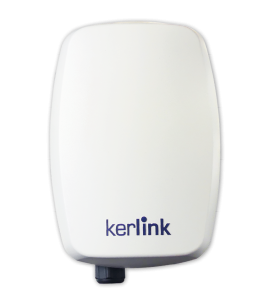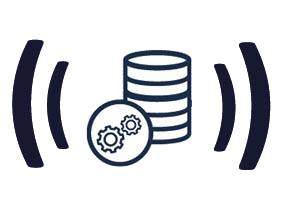Utilities & Metering
Increasing demand coupled with strong environment concerns are shaping a new era for IoT adoption
Smart Water
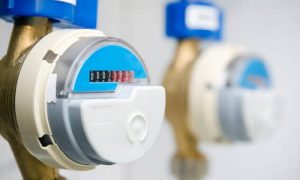
According to WWF, if water covers 70% of our planet – making us think that it will always be plentiful –, freshwater is, on the contrary, extremely rare: only 3% of the world’s water is freshwater of which two-thirds are kept in frozen glaciers or totally unavailable for use. Growing population, booming urbanization and industrialization, intensive agriculture (that uses 70% of the world’s freshwater, wasting some 60% with leaky irrigation systems and inefficient application methods), increasing pollution or inappropriate wastewater management (80% of wastewater flows back into the ecosystem without being treated or reused[1]) are impacting freshwater resources. These trends also accelerate climate change that, in return, changes patterns of weather and water around the world, leading to shortages and droughts in some areas and floods in some others[2]. At the same time, water utilities worldwide agree that around 20% of the freshwater produced is lost (difference between the water pumped, treated and supplied to the distribution system and what really reached end-users) and face increasing costs to maintain aging infrastructures. Cities are increasingly challenged by citizens to deliver water efficiently and to improve water resources conservation. Smart water management solutions, combined with Information and Communication Technologies (ICT), are giving detailed insights on water consumption & use and are progressively transforming not only the way water is managed, but also people’s practices, culture, and attitudes towards water resources. The global smart water management market was valued at USD 7.73 billion in 2020, and it is expected to reach USD 15.12 billion by 2026, registering a CAGR of 12.3%, during the period from 2021 to 2026[3].
So far, cities were using Automated Meter Reading (AMR) systems which were one-way automated meter readers that send water usage index back to the utility for invoicing. Cities and water utilities are now widely deploying Advanced Metering Infrastructure (AMI) connecting smart water meters, using an IoT network, to the utility’s water management and information systems to enable a two-way solution to remotely collect precise usage data from the meter and to send instructions back to the meter and high-resolution consumption data to the end customer. Smart IoT sensors (to measure pressure, temperature, flow or quality) and smart valves (to shut them off in case of leak, broken pipe or other water-related problem) are also used by utilities to map the water usage and distribution throughout the entire supply chain. Smart water metering systems using IoT can be used for both residential, commercial and industrial freshwater transport and distribution. Using smart meters can help to identify heavy usage, forecast demand or anticipate billing, compare consumption trends with similar households or industries and track appliances performance. Smart water metering enables homeowners, property owners, industry operators and cities managers to get instant insights on their water consumption and raises consumers’ awareness on water usage. Smart sensors and valves can help utility operators to quickly identify, locate and fix leaks and to get real-time reports on water quality and water distribution, limiting the risk of waste of water.
Kerlink industrial-grade IoT solutions, powered by LoRaWAN technology, can bring the performant, robust and reliable IoT connectivity needed to connect lora-enabled smart water meters, smart water sensors and smart water valves. Because they are often located in basements, undergrounds, rooftops or ceilings, or hidden in remote areas, IoT water devices and connected equipment require carrier-grade best-in-class LPWA indoor connectivity able to deeply penetrate building materials and to offer strong signal strength, in any type of RF environment. Kerlink indoor and outdoor IoT LoRaWAN gateways and network management tools, designed for public and private IoT networks, bring the versatile coverage requested by water utilities to power smart water data collection and management in cities. Smart water management is more than simply measuring the flow from production to consumption or to simply connecting meter readers. Smart water management helps to get insights on every part of the water cycle – from sourcing, to treatment to delivery to consumption to invoicing and support – to optimize utility response time, reduce costs of manual labor and improve operator efficiency – by eliminating travel to remote locations and simplifying water network commissioning. Smart water management will, at the end, enhance water quality, diminish the waste of water and help conserve this precious resource, for the benefits of cities and their citizens.
[2] https://www.worldwildlife.org
[3] https://www.mordorintelligence.com
Smart Gas
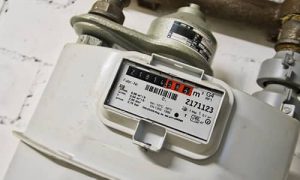
The use of natural gas as a primary necessity for residential, commercial and industrial needs is growing at a steady pace worldwide. Broad affordability, stable pricing and reliable distribution make natural gas a good choice for households, public services and industries for cooking, heating and hot water production. Gas keeps on improving the quality of life for both residents and businesses, and the global industry has a great opportunity to accelerate the adoption of the technological connectedness that is increasingly becoming the norm today in various vertical markets. In this trend, gas utilities and gas distribution companies are deploying advanced communication networks and smart connected meters that were initially applied to water and electricity markets. New generation of open and versatile networks, like those using low-power and long-range technologies, brings the IoT connectivity required for advanced metering infrastructure (AMI) to get real-time insights on the gas distribution network and on the end-users’ consumption. Gas utilities can face multiple problems ranging from gas losses, irregular consumption reading and inaccurate invoicing, meters manipulations or usage limits overspending. Smart gas metering brings the relevant digitization of smart distribution grids and the optimization of network operations based on data measurement and analysis. The global smart gas meter is forecasted to reach USD 10.92 billion by 2026, with a CAGR of 6.3% over the period 2019-2026[1].
Smart gas meters, smart index readers and IoT sensors can help to quickly deploy and operate an intelligent gas advanced metering infrastructure (AMI). Gas meters measure gas flow and records gas consumption. Index meter reading (IMR) walk-by systems – where indexes are collected using a radio device carried by an employee or installed in a vehicle – and automatic meter reading (AMR) systems – where telemetric devices are sending the index to the utility central system through a one-way communication network – are still widely used. They enable to get exact consumption but still need physical inspection but lack the flexibility of real-time information collection and end-user information. Smart gas meters, on their side, do not only measure gas flow through pipes in real-time, but they also connect to the IoT network to offer infrastructure maintenance (status of the meter, device calibration, system configuration), remote monitoring and instant index sharing for consumption monitoring and automatic billing. Smart gas meters also embed leakage and shock detection sensors that can detect abnormal or emergency situations, thus improving safety. Powered by batteries, smart gas meters can function for long periods of time and transmit data regularly. Smart sensors and IoT devices can also be used to monitor smart valves and gas pressure and detect gas leaks on the distribution grid. Changes in pressure, temperature, flow, methane levels or cathodic protection can be instantly identified for appropriate investigation, gas service interruption and fast response, to improve security and efficiency. Automated gas management can also be used for residential and industrial gas tanks, to ensure 24/7 remote monitoring, anticipate refill, get notification and monitor tank status.
Kerlink best in class industrial-grade IoT solutions, powered by LoRaWAN technology, can bring the performant, robust and reliable IoT network needed to connect smart gas meters to eliminate manual meter reading, avoid reading errors and improve gas distribution operations. Kerlink indoor and outdoor IoT LoRaWAN gateways and network management tools, designed for public and private IoT networks, bring the versatile and cost-efficient coverage required for timely insights and data on gas infrastructure conditions. Leveraging Kerlink carrier-grade IoT solutions helps to quickly detect abnormalities, potential leaks, equipment malfunctions or breakdowns to anticipate potentially dangerous situations before they arise to keep both employees and customers safe, while meeting increasing regulatory requirements. Smart gas metering helps to improve gas utilities efficiency and operations and delivers consumers the appropriate insights they need to access their real-time gas usage and improve their consumption patterns.
[1] https://www.fortunebusinessinsights.com
Smart Electricity
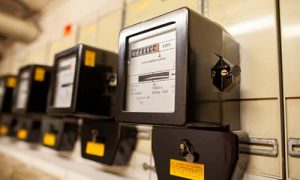
Global electricity consumption is progressing faster than world population, leading to an increase in the average amount of electricity consumed per person. The world’s electricity consumption reached approximately 23,398 billion kilowatt hours (or 23,398 terawatt hours) in 2018. Global electric power use expanded more or less steadily until 2000, when it began showing a more pronounced growth[1]. Electricity is used generally in homes and buildings for lighting, heating and appliances, in industrial processes for manufacturing and goods production and in transportation for powering rail and light-duty vehicle. It is also increasingly used to power electric vehicles (EV) for charging. However, nearly all of the increase is linked to booming electricity consumption in developing countries outside the Organization for Economic Cooperation and Development (OECD), where the per capita electricity consumption has more than doubled between 2000 and 2017, compared to a nearly flat trend in the economies of more developed OECD countries[2]. If electricity offers multiples advantage, it also come with some drawbacks, like the air pollution and global warming effect generated by power plants, the need for large and expensive infrastructure, the use of millions a metallic wires and cables and potential dangers like electric fires. The first challenge for electric utilities will be to invest enough to keep up with the developing demand while keeping final energy costs under control. Their second challenge relates to the regulation about global warming, as two-thirds of global greenhouse gas (GHG) emissions are linked to that sector. Their third major challenge is the ramping urbanization and the increase of electricity distribution in towns and cities: by 2030, the urban populations will have doubled from 2 to 4 billion people worldwide; cities that currently account for 66% of global energy consumption, mostly electricity, will probably rise to 75% in 20 years, putting extra pressure on the entire electricity production, distribution and operations chain[3].
Smart electricity meters and electricity readers are digital electric appliances that collects electricity usage information on a regular basis and that transmit this information to the utility using a secure and reliable wireless IoT networks. They can help to roll out an efficient smart metering solution in five ways. Connected smart electric meters and submeters can first help to automate smart grid operations in urban area for automated meter reading (AMR) using two-way IoT communication technology. The remote and automated collection of electricity usage can help utilities to quickly get accurate and up to date information to invoice customers and transparently share insights on their consumption patterns. AMR eliminates manual meter reading and invoice estimates, avoids wrong or fraudulent index sharing and reduces errors. Smart electric meters can also help to quickly detect electric power frauds, diversions, leaks, faults and losses in the distribution network based on located analysis of expected and legitimate current flow and voltage levels and the comparison with the ones really registered on the smart meters. Third, smart meters can enable transformer load management by continuously monitoring impedance in the lower voltage system, thus detecting potential risks of overload and enabling utilities to anticipate and take appropriate corrective actions. Fourth, smart meters can help utilities to dynamically manage residential and industrial demand response by offering them a granular tool to adjust individuals loads (on and off) for customized dispatch where and when needed (peak power demand) to make the best use of their distribution grid and to improve curtailable load forecasts. At the same time, they can thus incentivize their customers to adopt better energy-conservative usage patterns and to shift load (choosing lower-demand / lower-cost times of the day to have their appliances work) to reduce their bill over time. IoT sensors and devices, in addition to smart meter, can also help to protect, manage and monitor smart grid assets and equipment. Temperature, humidity, vibration, motion, voltage, disconnection… are some examples of information that can be collected from the field to detect intrusion, theft, overheating or lightning impact that can affect the availability, lifetime and performance of utility assets.
Kerlink industrial-grade IoT solutions, powered by LoRaWAN technology, can bring the performant, robust and reliable IoT network requested by utilities to deploy cost-efficient smart grid management solutions and automated meter reading (AMR) infrastructures. Kerlink IoT LoRaWAN gateways and network management tools, designed for public and private IoT networks, bring the versatile and cost-efficient deep-indoor and wide outdoor coverage required to get timely information on their electricity smart grid, to flexibly orchestrate demand response and to collect accurate data usage from households and businesses. Using IoT wireless connectivity for smart meters also enable electric utilities’ consumers to receive regular and accurate bills, to get transparent insights on their consumption, to learn about their energy usage patterns and adjust their habits to save energy and to cut costs.
[3] https://yaleglobal.yale.edu
Smart Green Energy
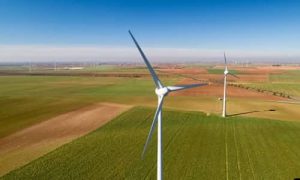
Green energy is considered as the source of clean power that will increasingly replace the energy generated by fossil fuels to reduce greenhouse gas (GHG), climate warming and global pollution. In recent decades, we collectively started to realize that we cannot keep on burning fossil fuels (coal, oil, natural gas and nuclear) for clean energy generation. According to the International Energy Agency, renewable energy, by opposition to finites sources of power, is expected to cover half of power generation by 2030 to meet the Sustainable Development Scenario (SDS)[1]. Production capacities must accelerate in a context where green energy is depending on its surrounding environment, making it largely unpredictable, variable and unable to be stocked. Solar, wind, hydroelectric and thermal power, as well as biomass and geothermal energy are complementary but also intermittent power production alternatives that require specific infrastructure for energy harvesting and distribution. Monitoring production equipment status, performance and capacity on the field, as well as tracking weather conditions and environment insights, request embedded sensors and real-time connectivity to collect data for relevant technical analysis and timely decision-making. This is where IoT and smart technologies come into play.
IoT sensors and devices can successfully help to efficiently operate green energy production capacities. For solar panels and solar power farms, using technologies like photovoltaics (PV) – transforming the sunlight into power – or concentrated solar power (CSP) – harnessing the heat of the sun to generate steam from water or agent, like molten salt, to spin a turbine to produce power – IoT sensors can help to monitor working conditions. A pyranometer can measure solar radiation available at the plant site as an indicator of the solar energy available for generation. IoT sensors can monitor wind speed and direction, follow barometric pressure, analyze cloud coverage and track ambient air temperature and humidity, to get their impact on solar panels temperature and the way it will affect their energy output. IoT enables the granular real-time status monitoring, correction, and predictive analytics of each individual panel (temperature, tilt angle for maximum solar radiation, cardinal direction…). IoT also helps to remotely monitor and control utility-scale solar power generating assets, from the solar farm to the distribution grid, enabling real-time metering to determine its overall yield and revenue. Even building integrated photovoltaics (BIP) seamlessly integrated into roof, canopies, curtain walls, facades or skylight systems need remote IoT monitoring to ensure efficient production capacity and proactive maintenance. Wind turbines and windmills farms are another key example of connected equipment that can benefit from IoT sensors and devices. Located onshore or offshore, they can operate totally autonomously until something goes wrong. IoT delivers the right monitoring for both weather conditions (wind speed and direction, barometric pressure, temperature in the sea/air, lightning impacts…) but also mechanical conditions (torque and vibration, blade and housing integrity, turbine and wiring status… above and below the waterline). A wind turbine generator (WTG) is costly – around € 1M each – and complex – up to 1,000 sensors, processors, actuators including strain gauges, bearing monitors, optimization algorithms, intelligent monitoring and power technologies – and needs to be remotely monitored to anticipate failures and downtimes, optimize its reliability and maximize the lifetime of its key components to decrease maintenance costs, especially for open sea wind farms. IoT helps to deploy conditions-based maintenance and to plan repairs only when specific decreasing performance thresholds are reached or specific components at risk. Hydroelectric power or sea turbines (using the kinetic power of falling water, tides or undercurrents to spin underwater turbines), biomass energy (using of wood, plant waste, municipal solid waste, biofuel such as ethanol and biodiesel, biogas or landfill gas to produce steam to spin a turbine) and geothermal energy (using very hot water coming for the underground to produce steam or heating) face exactly the same challenges of both environment analysis and equipment monitoring to adapt capacity and performances that can be served by IoT solutions.
Kerlink industrial-grade IoT solutions, powered by LoRaWAN technology, can bring the low power, long range and versatile IoT network requested by green energy utilities to deploy smart energy solutions. Connecting both environmental IoT sensors and renewable energy production equipment, Kerlink IoT LoRaWAN gateways and network management tools, can deliver the robust, performant and reliable IoT connectivity needed by green energy companies to set up their energy-efficient public or private IoT network. Green utilities will then be able to remotely monitor their electricity production assets, optimize settings for maximum output, detect the most favorable conditions for energy harvesting, improve predictive maintenance to cut operational costs and make the best of their data for increased efficiency and optimized performance, throughout their generation, transmission, and distribution equipment.




